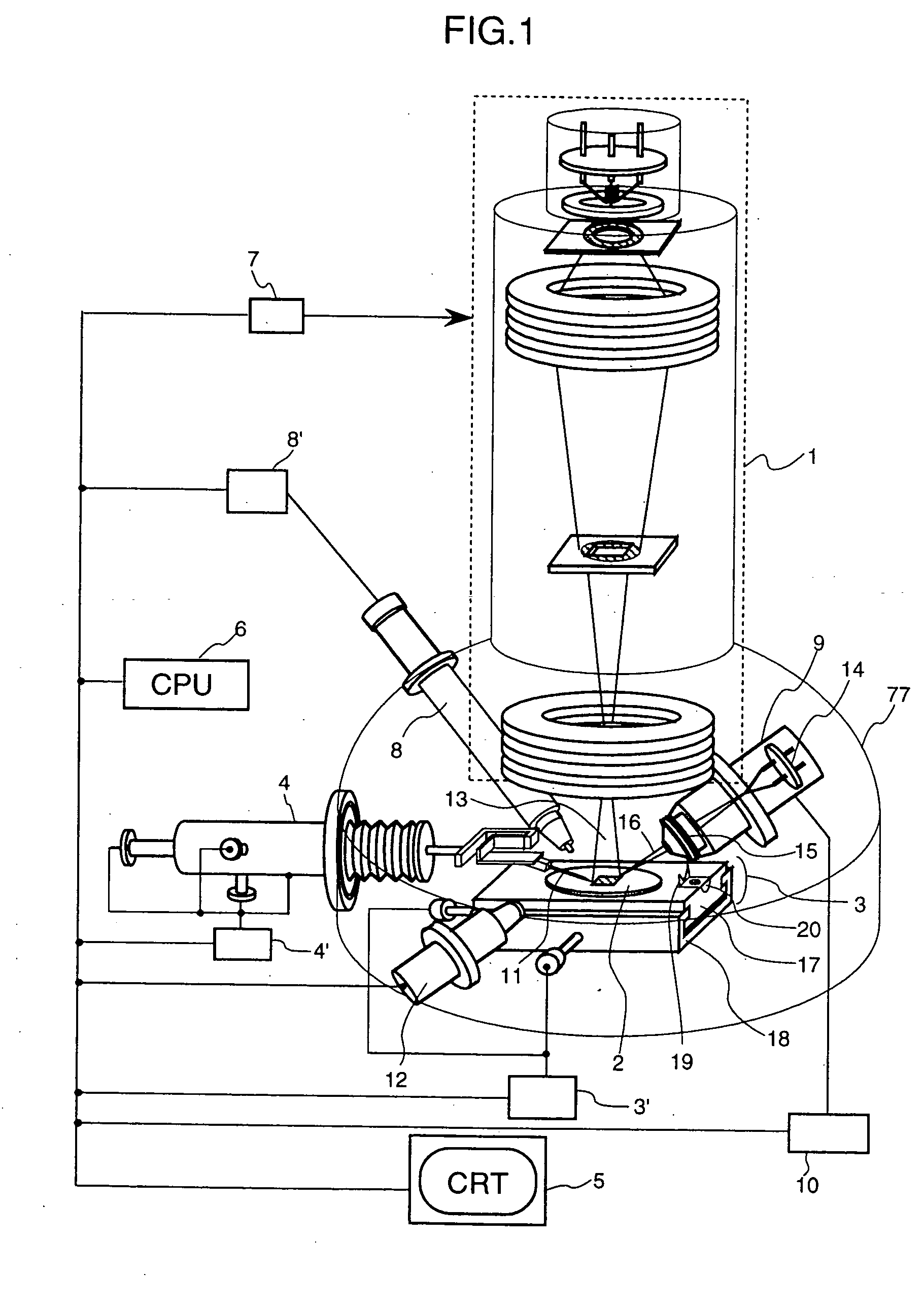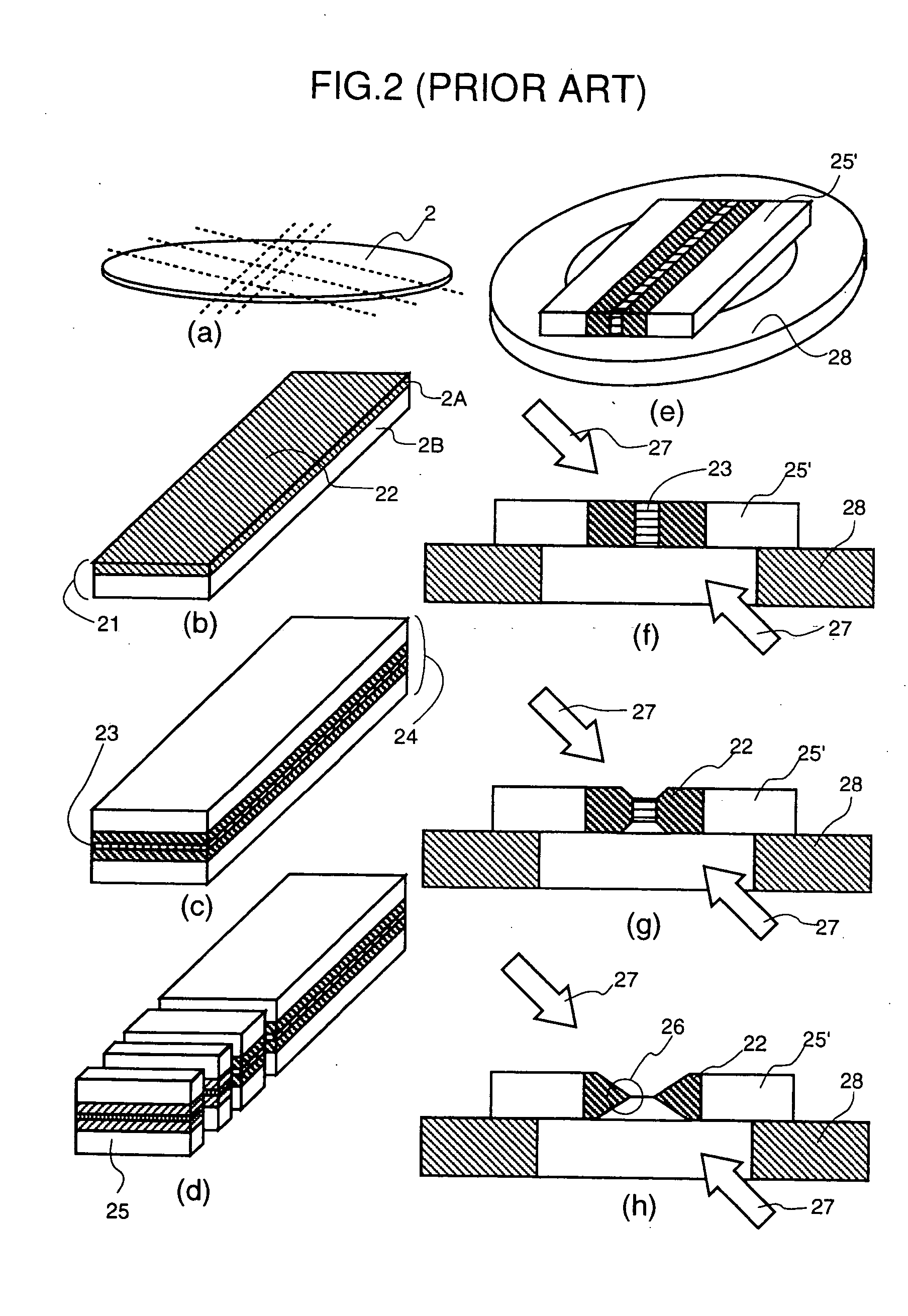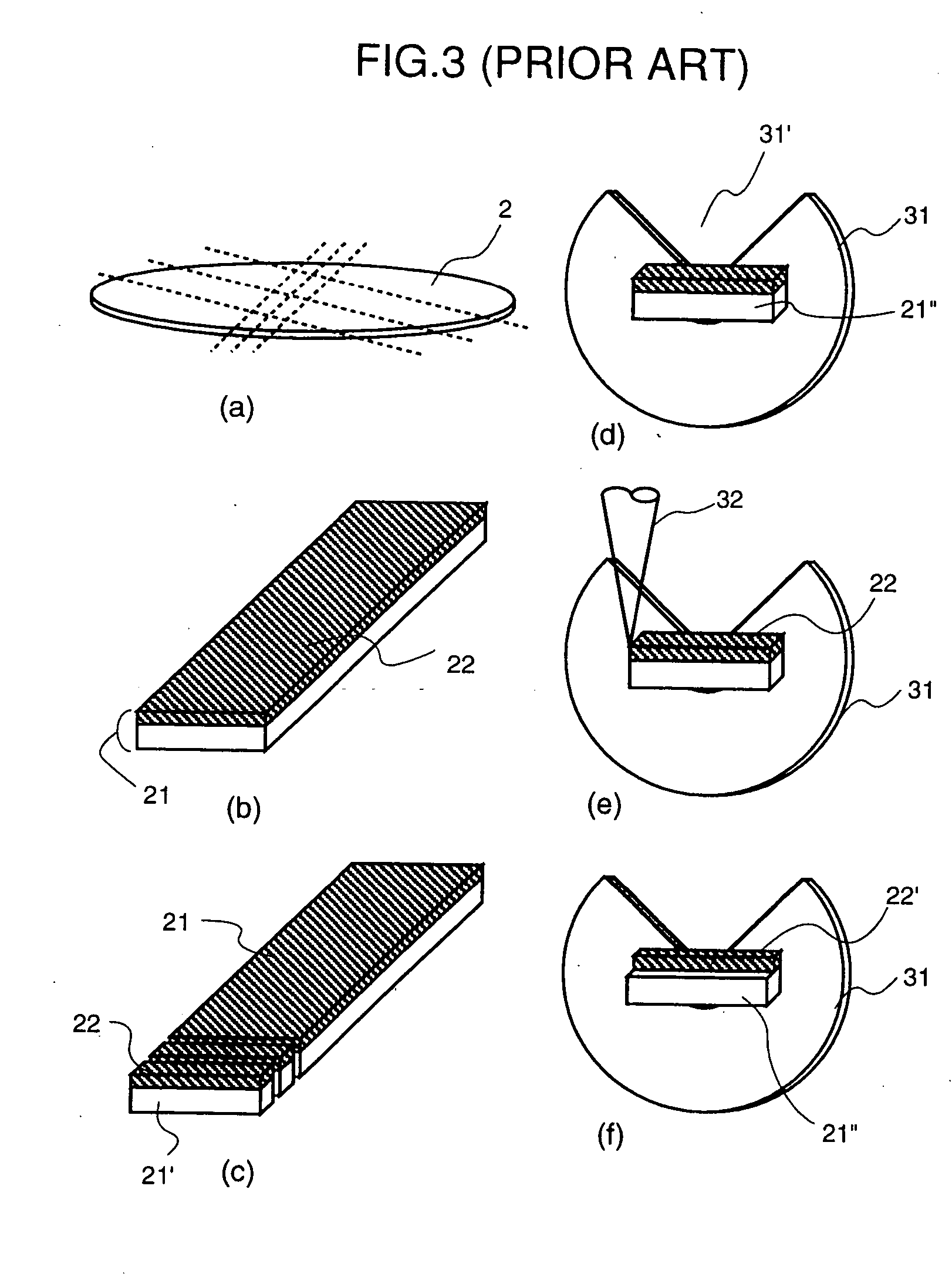Method and apparatus for specimen fabrication
a technology of a specimen and a fabrication method, which is applied in the field of methods and apparatus for fabricating specimens, can solve the problems of requiring the skill of a well trained person to fabricate the specimen, unable to help resorting to manual work, and a long time, and the method described above cannot help resorting to manual work, and the fabrication of the specimen cannot help. , to achieve the effect of avoiding the occurrence of adsorption of adsorption, avoiding
- Summary
- Abstract
- Description
- Claims
- Application Information
AI Technical Summary
Benefits of technology
Problems solved by technology
Method used
Image
Examples
first embodiment
FIG. 1 is a diagram showing the basic configuration of a specimen fabrication apparatus as implemented by an embodiment of the present invention.
As shown in the figure, the specimen fabrication apparatus implemented by the embodiment of the present invention comprises: an ion-beam irradiating optical system 1 for irradiating an ion beam 13 to a specimen substrate 2 of a specimen, that is, an object of observation, such as a semiconductor wafer or a semiconductor chip; a sample stage 3 for moving the specimen substrate 2 mounted thereon; a sample-stage position controller 3′ for controlling the position of the sample stage 3 in order to identify a portion of the specimen substrate 2 to be observed or an area to be observed; a probe driver 4 for holding and moving a probe 11; a probe-driver controller 4′ for controlling the probe driver 4; a deposition-gas supplying source 8 for supplying deposition gas, that is, gas used for deposition, to the vicinity of the area on the spec...
second embodiment
FIG. 17 is process explanatory diagrams showing another embodiment of the present invention for implementing a method for fabrication of a TEM specimen. The method is adopted in the specimen fabrication apparatus shown in FIG. 1 and only a PJIB is used as an ion beam for fabrication.
First of all, a PJIB 13′ is irradiated to regions surrounding an observation area 103 on the specimen substrate 2 shown in FIG. 17 / (a) by using a mask with a shape resembling a symbol ‘]’ as shown in FIG. 17 / (b) to form a trench 104 having a bottom with a shape resembling the ‘]’ symbol as shown in FIG. 17 / (c). Then, the sample stage 3 shown in FIG. 1 is inclined to carry out a bottom-dividing fabrication by means of the PJIB 13′ as shown in FIG. 17 / (d). Subsequently, the tip of the probe 11 held by the probe driver 4 is brought into contact with a micro-specimen formation portion 99. The state of contact between the tip of the probe 11 and the micro-specimen formation portion 99 can be verified by det...
third embodiment
FIG. 18 is process explanatory diagrams showing a further other embodiment of the present invention for implementing a method for fabrication of a TEM specimen. In this embodiment, a marking process for clarifying a specific position 105 on a micro-specimen 40 to be observed or analyzed is added to the methods for fabrication the micro-specimen 40 described earlier. It should be noted that, since the other processes in this third embodiment are virtually the same as those shown in FIG. 17, their explanation with reference to diagrams is not repeated. In this embodiment, in order to avoid the observation location 105 from being no longer unidentifiable after the micro-specimen 40 including a specific location 105 to be observed has been extracted from the specimen substrate 2, a process to put a mark on the observation location 105 is added in order to clearly show the observation location 105. The observation location 105 is a specific location at which a thin wall portion for obser...
PUM
 Login to View More
Login to View More Abstract
Description
Claims
Application Information
 Login to View More
Login to View More - R&D
- Intellectual Property
- Life Sciences
- Materials
- Tech Scout
- Unparalleled Data Quality
- Higher Quality Content
- 60% Fewer Hallucinations
Browse by: Latest US Patents, China's latest patents, Technical Efficacy Thesaurus, Application Domain, Technology Topic, Popular Technical Reports.
© 2025 PatSnap. All rights reserved.Legal|Privacy policy|Modern Slavery Act Transparency Statement|Sitemap|About US| Contact US: help@patsnap.com



